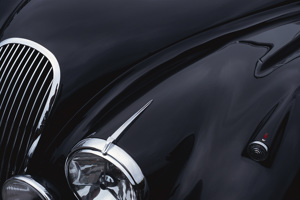Will Forgery: Where Experienced Experts Come in Handy
Judgment was handed down this month by Master Julia Clark in the case of Watts v Watts (Watts v Watts [2023] EWHC 679 (Ch)). The claim concerned whether the last Will of Mr Eustace Watts (dated 8 February 2000) (the 2000 Will) was a forgery.
The hearing attracted the attention of the UK press, primarily due to the case’s somewhat intriguing history, in that it concerned the estate of the late Mr Eustace Watts, formerly a well-known leader of a Calypso band and his wife Jobyna Watts, who was a showgirl at the Windmill Theatre in London’s West End.
The Facts
Eustace Watts died on 29 April 2008. He was married to Jobyna Watts for 53 years and together they had two sons – Carlton and Fraser. The 2000 Will bequeathed Eustace’s entire estate to Jobyna. An earlier will (made in 1994) had left Eustace’s estate in equal shares to Jobyna, Carlton, and Fraser.
Carlton issued the claim against his mother, Jobyna, in April 2020, alleging that his late father’s 2000 Will was a forgery (i.e., that the signature was not made by him but by Jobyna). Where a will appears to have been properly executed, the burden of proof is on the person bringing the claim (i.e., Carlton) to show the signature is a forgery.
Section 9 of the Wills Act 1837 sets out prescriptive requirements for the valid creation of a will in England and Wales. One of these requirements is that a will must be “signed by the testator, or by some other person in his presence and by his direction”. Each witness to a will must attest and sign the will or acknowledge his signature in the presence of the testator. In this case, the witnesses to the 2000 Will were Sarah Evans, the solicitor who had prepared it, and a legal assistant from the same law firm.
The 2000 Will was produced on a screen-typewriter and a PDF copy of it was filed in November 2020 following a directions order of the Court. Jobyna had given Carlton a photocopy of the 2000 Will in 2009, following his father’s death. In June 2009, Carlton visited the firm where Sarah Evans had worked and confirmed that he was satisfied that the original was identical to the copy he had been shown by his mother.
Witness Evidence
During the proceedings, Master Clark accepted the evidence of the solicitor Sarah Evans. She recalled having two meetings with Eustace Watts (whom she characterised as “a memorable character”) about the production of his 2000 Will and his attending her office to sign the 2000 Will. Master Clark also accepted that Sarah Evans had received clear instructions from Eustace Watts that he wished for Jobyna, should she survive him, to be the sole beneficiary of his estate to the exclusion of Carlton.
Carlton appeared as the only witness of fact in support of his claim. Mrs Watts, Fraser, and Sarah Evans all appeared as witnesses of fact in defence of the claim.
Expert Evidence
Both Carlton and Jobyna had handwriting experts to examine and provide expert evidence on the deceased’s signature.
Handwriting experts analyse handwritten text using scientific methods, in order to determine whether text which is purported to be by one individual matches their handwriting. Handwriting experts should be distinguished from graphologists, who examine handwriting traits, such as fluency, to help assess and ascertain whether the handwriting is by the individual concerned.
Carlton’s handwriting expert, Mr Douglas Cobb’s findings, were heavily criticised by Master Clark. She questioned his qualifications and his reliance on one example of Jobyna’s signature. He was unable to explain the relevancy of various inconsistencies between the original 2000 Will and a later photocopy of the same.
Jobyna’s expert was Mr Michael Handy, an experienced expert who had given evidence on the forensic examination of documents in multiple court proceedings. Mr Handy drew the Court to his examination of Eustace Watts’ signature of which he provided numerous examples made over more than sixty-five years. Across these examples, including the 2000 Will, “there were no apparent significant differences between comparable components”. Master Clark commented in her judgment that she agreed with Mr Handy that the signatures in the original 2000 Will were “fluently made” and so could not have been traced at a later date.
Conclusion
If the Court had found that the 2000 Will was a forgery, it would have been deemed invalid. If the 1994 will was not upheld by the Court, then Eustace Watts would have to have died intestate. His estate would have been distributed in accordance with the intestacy rules, which would mean that as a child of the deceased, Carlton would have received a portion of 50% of his father’s net estate, which would be split between his father’s children.
















